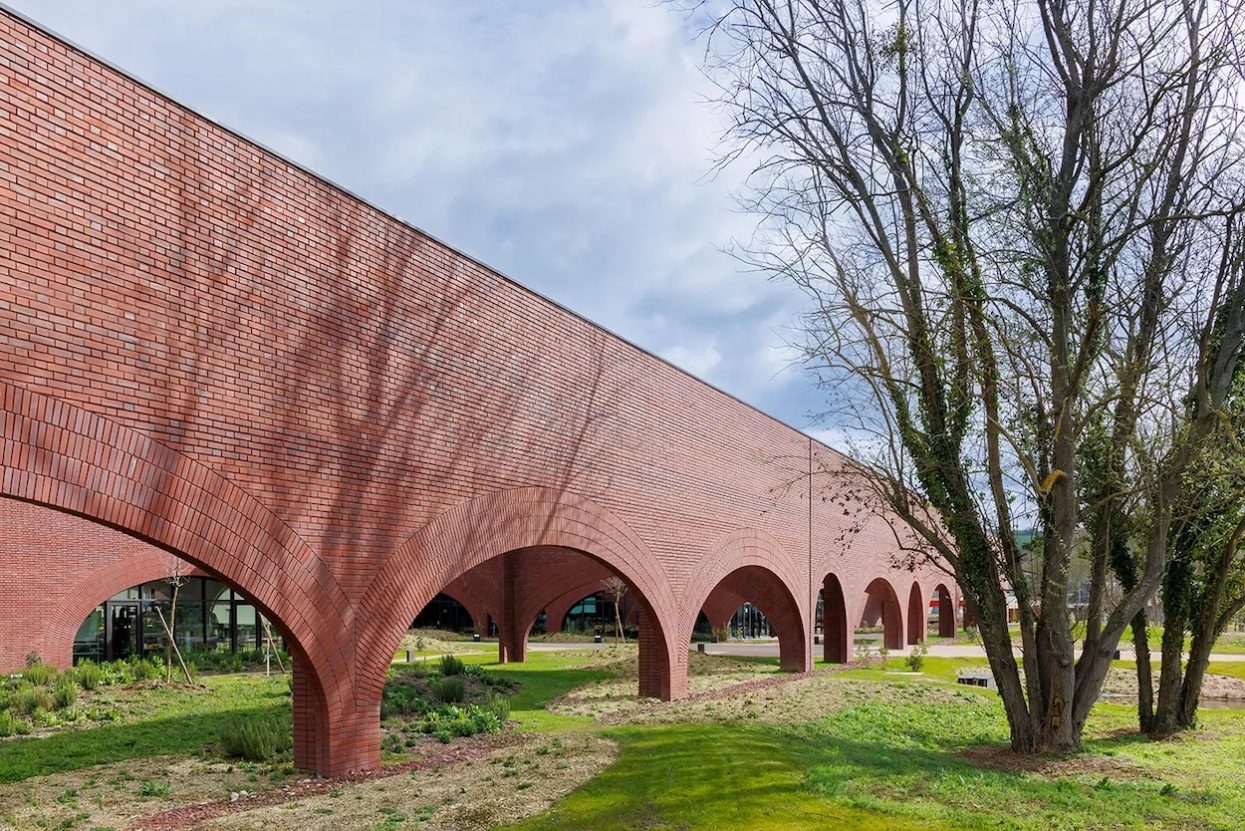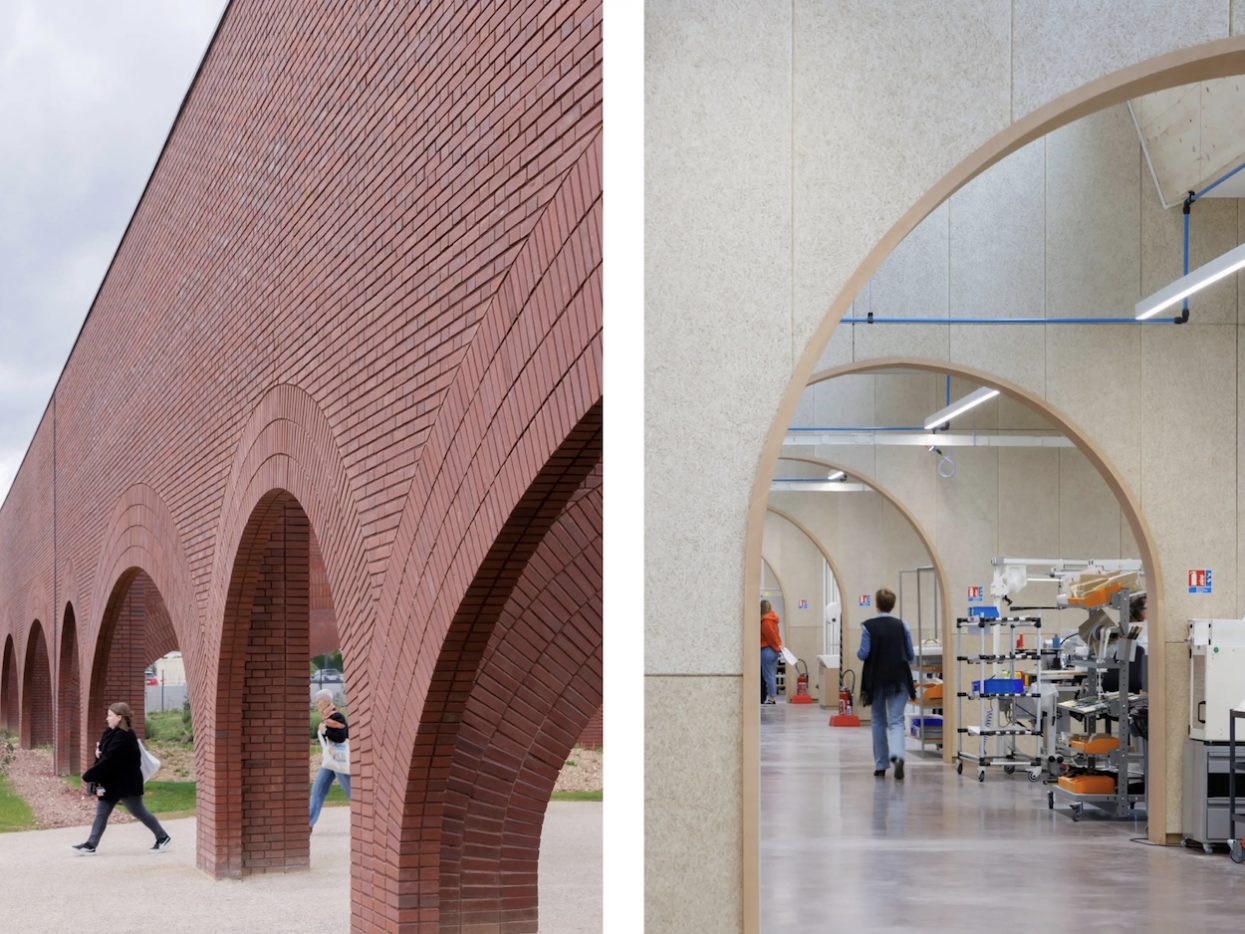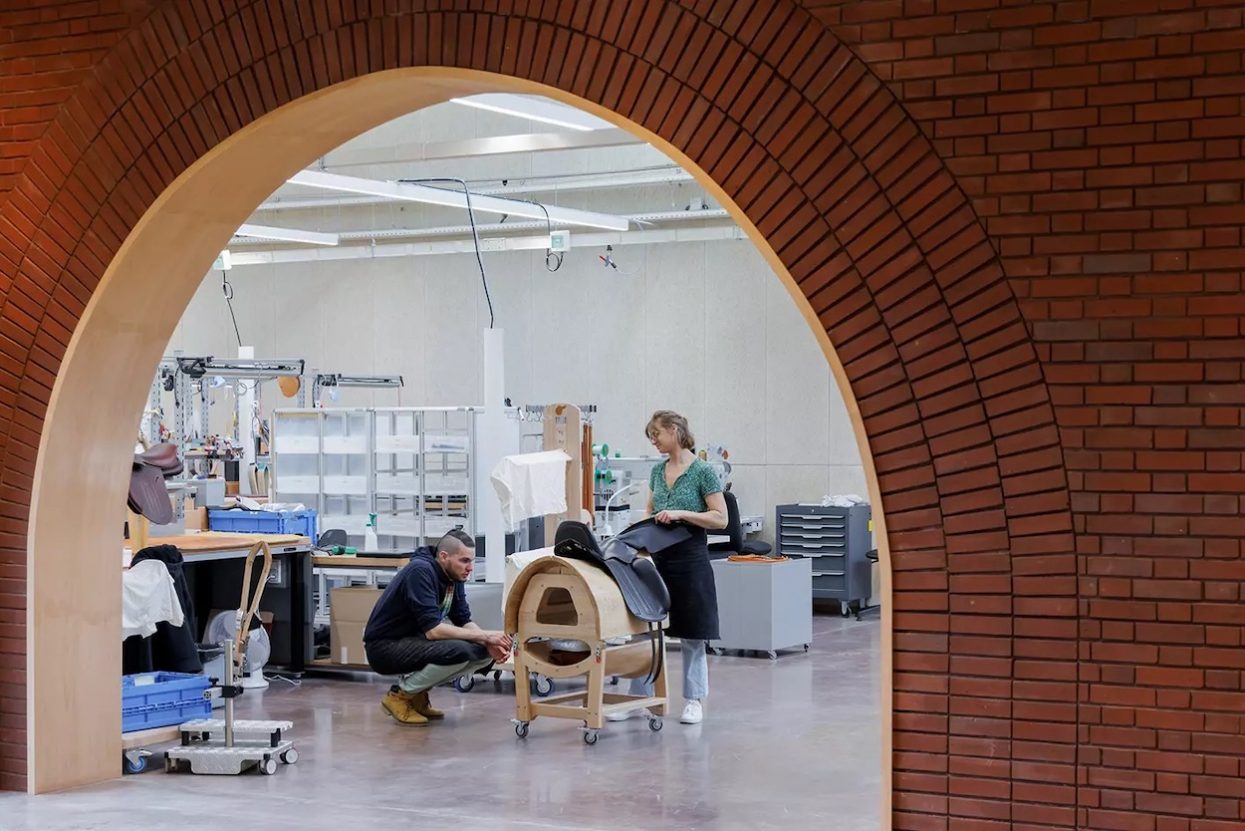Hermès is best known today for highly coveted handbags like the Birkin and Kelly, but the French maison founded in 1837 by Thierry Hermès originated as a saddle maker. Even as equestrian transport waned with the advent of the automobile, Hermès has remained an undisputed master in saddle manufacture. Its historic Parisian headquarters is staffed by seasoned artisans who meticulously construct ergonomic saddles cut from the house’s finest leathers. As the family-owned label has lurched into expansion mode following consecutive years of billion-dollar profits, it’s doubling down on building state-of-the-art workshops around France so its artisans have more space to master their craft.
Spearheading the design for the latest atelier is Lina Ghotmeh, the ascendant French-Lebanese architect who recently unveiled her Serpentine Pavilion in London. Located in the equestrian region of Normandy, where Thierry worked as a saddle maker for ten years before founding Hermès, the workshop occupies a compact single-story, square building—an homage to the shape of the brand’s famous silk scarves. Further nodding to craft are the half-million bricks, produced using traditional methods at local brickyards, forming a series of dynamic arches that gallop across the ten-acre site. “Not only is brick a local material,” Ghotmeh says, “it’s made by hand and is dimensioned for manual use, so its presence in the architecture reflects the trace of the hand in Hermès’s craft manufacture.”


